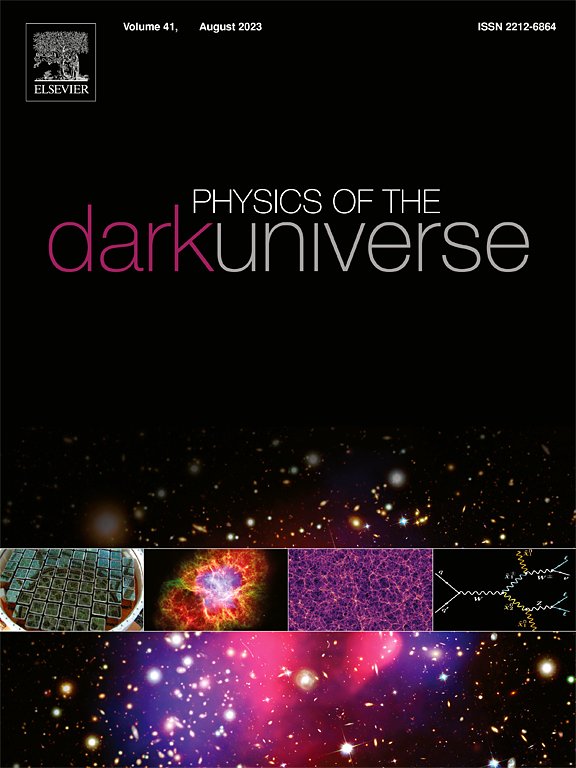Modified f(R,T) theory in light of gravitational wave standard sirens
IF 5
2区 物理与天体物理
Q1 ASTRONOMY & ASTROPHYSICS
引用次数: 0
Abstract
In this paper, we ponder observational constraints on the modified gravity, where the gravitational action is a function of Ricci scalar plus the trace of the energy–momentum tensor , regarding the functional form with . For this purpose, we utilize recently available data, including cosmic microwave background, weak lensing, supernovae, baryon acoustic oscillations, and redshift-space distortions measurements, together with forcasted gravitational wave (GW) data from Laser Interferometer Space Antenna (LISA). Notably, we examine the potentiality of simulated GW data from LISA standard sirens (SS) sources to enhance cosmological constraints on the model parameters. In this regard, we create three LISA mock catalogs, namely Pop III, Delay, and No Delay, to improve the obtained constraints on cosmological parameters of gravity from current observations. Numerical analysis reveals that mock GW data from LISA SS sources make marginal improvements on constraining the model cosmological parameters.
根据引力波标准信号修正了f(R,T)理论
本文考虑了修正f(R,T)引力的观测约束,其中引力作用是里奇标量R加上能量动量张量T的迹的函数,函数形式为f(R,T)=R+2f(T), f(T)=8πGλT。为此,我们利用最近可用的数据,包括宇宙微波背景,弱透镜,超新星,重子声学振荡和红移空间畸变测量,以及来自激光干涉仪空间天线(LISA)的预测引力波(GW)数据。值得注意的是,我们研究了来自LISA标准警笛(SS)源的模拟GW数据的潜力,以增强对f(R,T)模型参数的宇宙学约束。在这方面,我们创建了三个LISA模拟星表,即Pop III, Delay和No Delay,以改进从当前观测中获得的对f(R,T)引力宇宙学参数的约束。数值分析表明,来自LISA SS源的模拟GW数据在约束f(R,T)模型宇宙学参数方面有边际改进。
本文章由计算机程序翻译,如有差异,请以英文原文为准。
求助全文
约1分钟内获得全文
求助全文
来源期刊

Physics of the Dark Universe
ASTRONOMY & ASTROPHYSICS-
CiteScore
9.60
自引率
7.30%
发文量
118
审稿时长
61 days
期刊介绍:
Physics of the Dark Universe is an innovative online-only journal that offers rapid publication of peer-reviewed, original research articles considered of high scientific impact.
The journal is focused on the understanding of Dark Matter, Dark Energy, Early Universe, gravitational waves and neutrinos, covering all theoretical, experimental and phenomenological aspects.
 求助内容:
求助内容: 应助结果提醒方式:
应助结果提醒方式:


